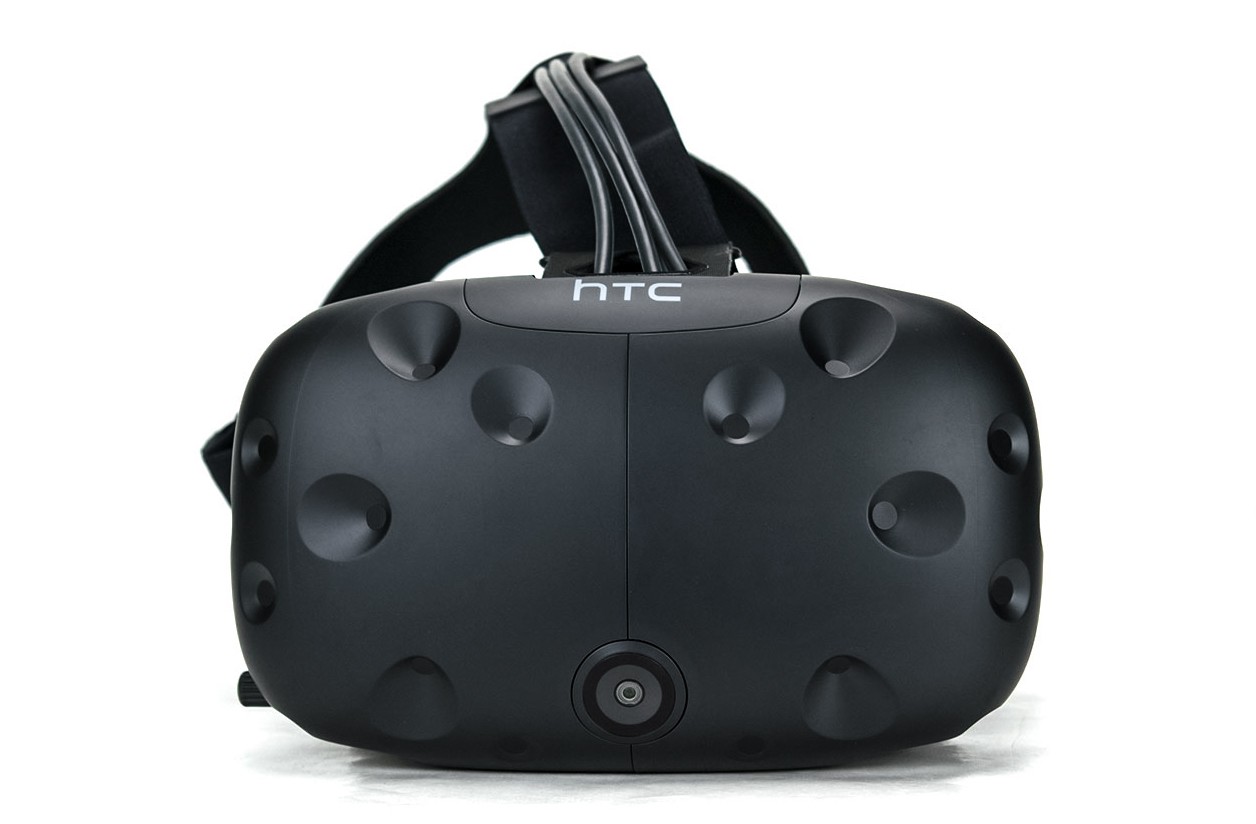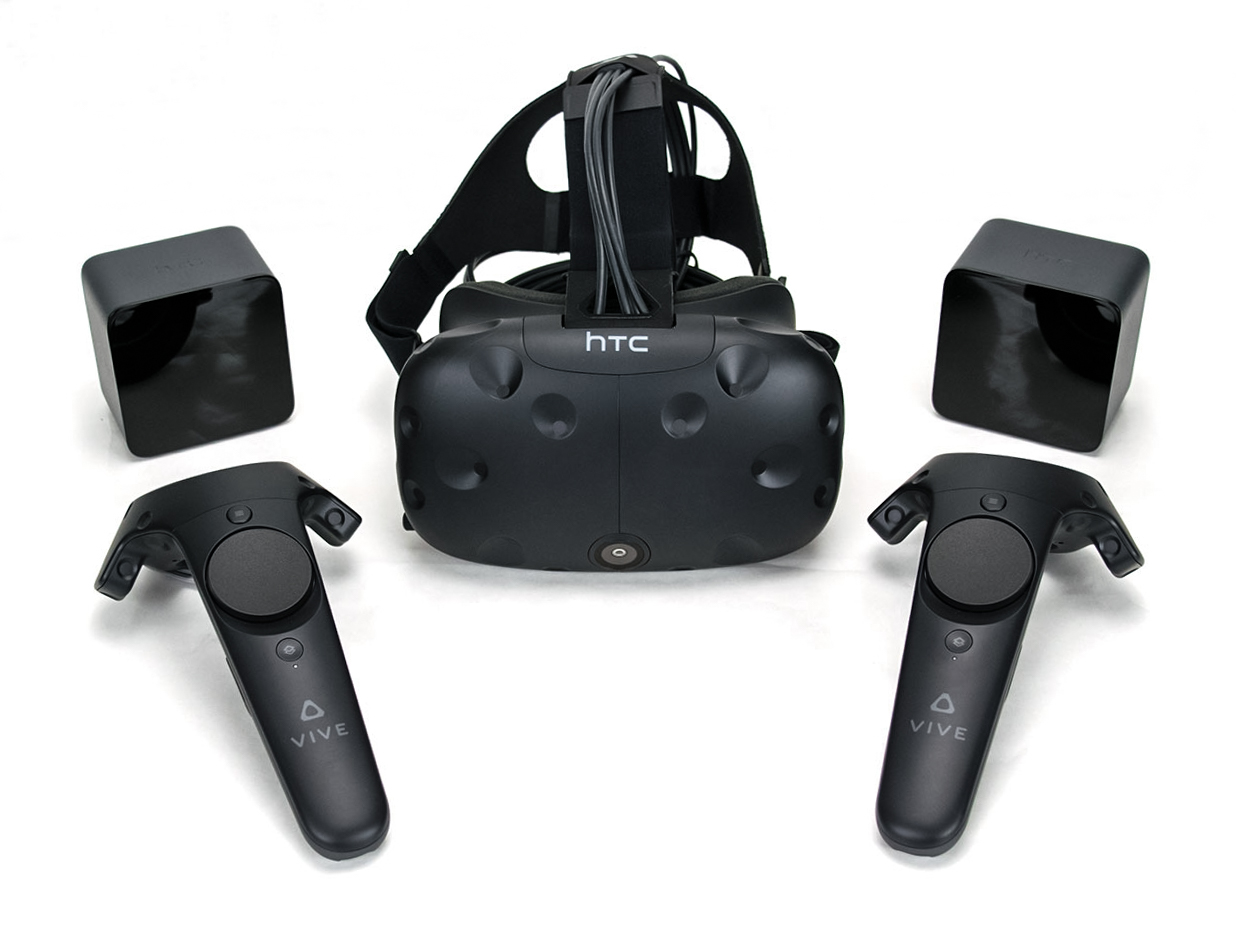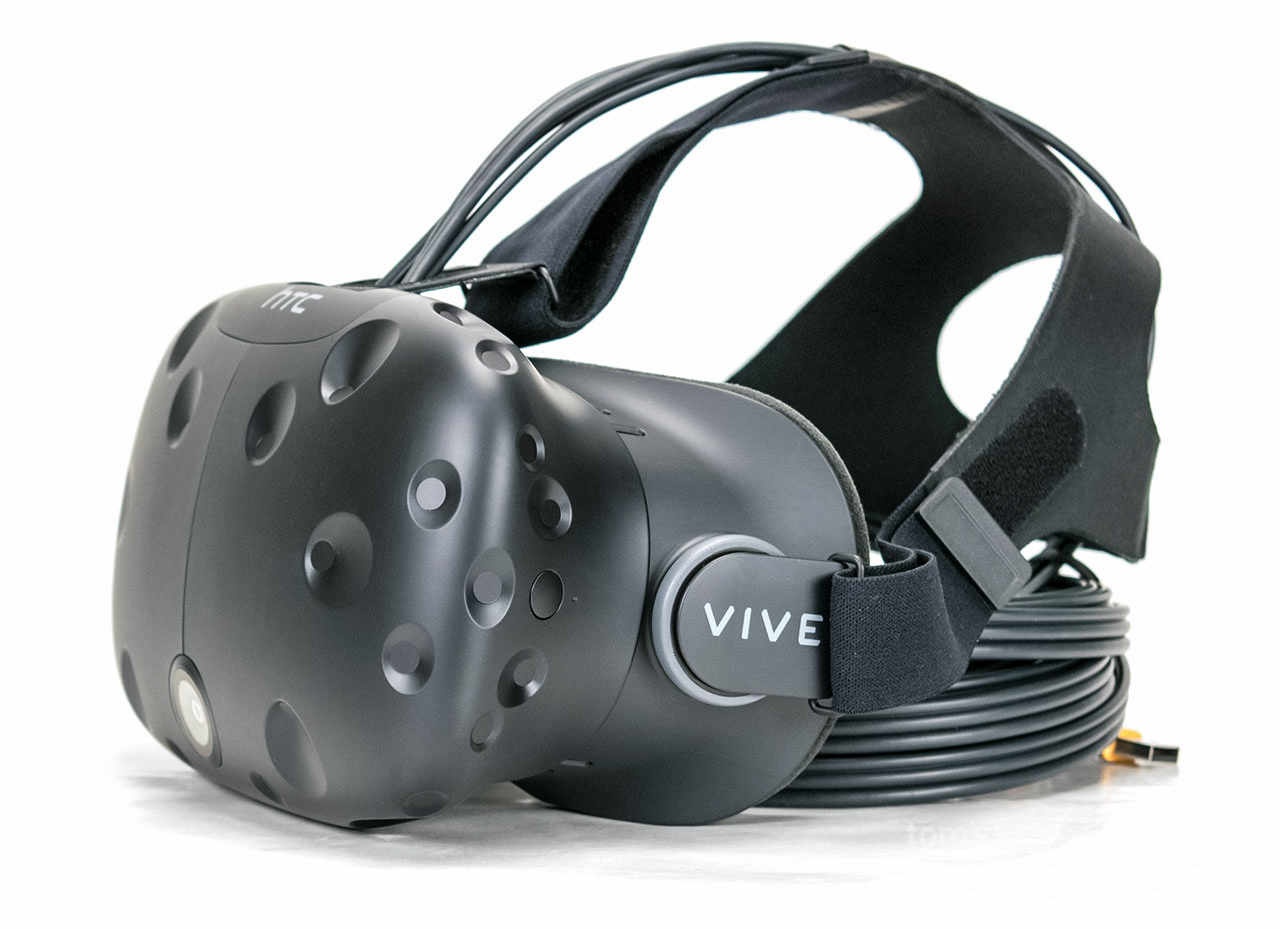Early Verdict
HTC’s Vive offers the most complete VR experience available for home use. The Vive’s tracking system offers unparalleled tracking volume, and the Vive Tracker accessories enable tracked accessories for enhanced immersion. HTC’s headset is more expensive than the competing products, but in our view that cost is justified.
Pros
- +
Incomparable experience
- +
6DoF controllers
- +
Room-scale tracking
- +
Comfort
- +
Intuitive interface
Cons
- -
Price
- -
Bulky cable
- -
Hard on neck and back
- -
Potential tripping hazard
Why you can trust Tom's Hardware
Introduction & Overview
The age of virtual reality kicked off a little more than one week ago, and enthusiasts can already choose the high-end experience they prefer. Last week we covered the launch of Oculus' Rift, and today we're looking at the Rift's first competition, HTC's Vive, designed in partnership with Valve. The Vive builds on the VR we've already seen by adding six degrees of freedom (6DoF) hand controllers and the ability to walk around within virtual spaces. Whereas the Rift offers presence in virtual reality, the Vive takes you one step further into that world.
In addition to the controllers that get your hands into the game, HTC's Vive includes a tracking system that allows you to move around and interact with your virtual environments. Valve calls this room-scale VR, and it's not a gimmick. Rather, it's what sets the Vive apart from Oculus' Rift. Although the Rift will have its own answer to HTC's 6DoF controllers later this year, the Vive's room-scale VR is the one feature that remains unchallenged for now.
Naturally, room-scale VR presents a unique set of challenges. There's safety, to start. HTC addresses this through the Chaperone, a system designed to keep you from unknowingly walking into real-world objects. The peace of mind this provides makes it easier to "trust" VR without worrying about what's happening outside of your headset. You also get a front-facing camera. We'll see how developers end up using it. For now, though, it's another way to monitor what's happening with the HMD pulled over your eyes.
Sounds fancy, right? There's little doubt that HTC is going for a more premium VR experience than its competition. Oculus started this journey with the idea that it wanted to make virtual reality as affordable as possible. The hardware ended up launching at a price point much higher than many originally anticipated. However, Oculus was really gunning for lower cost. HTC and Valve, on the other hand, tout Vive as the most engaging VR platform out there. Oculus had its fans expecting VR for the masses, and then had to backpedal. Meanwhile, HTC and Valve made us aware that this was going to be a pricey purchase. Early details had us believing that the experience would be worth it, though.
So the hardware sounds compelling enough, but what about the software side? After all, content is just as important, if not more. And as we mull over our favorite VR experiences and try to decide which HMD to buy, each company's library weighs heavily on our opinions. But let's not forget that we're talking about Valve here. Its Steam platform speaks for itself. Steam is open for all developers, and if you're a gamer, you probably already have an account. Want more evidence? Although Oculus had a head start over HTC, the Vive is launching with more titles to choose from. And from what we're hearing, there are 100+ more on the way featuring Vive support.
From where we're sitting, the Vive has all of the ingredients it needs to successfully challenge the incumbent Rift. But does the brainchild of HTC and Valve make you want to clear out some space in your home, get up on your feet and game in VR? We've been playing with the retail Vive for a week now (and a Vive Pre for a month before that) and we're eager to tell you about the experience. Trust us, it's worth paying attention to.
MORE: The History of Virtual Reality
MORE: The HTC Vive VR Launch TitlesMORE: SteamVR Performance Test: 16 GPUs ComparedMORE: Beta SteamVR Interface Is Easy To Navigate, Offers CustomizationMORE: The Oculus Rift ReviewMORE:
AMD Liquid VR ExplainedMORE:
Nvidia GameWorks VR Explained
MORE: The Past, Present, And Future Of VR And AR: The Pioneers SpeakMORE:
The Key To Virtual Reality Immersion Is The Audio
Get Tom's Hardware's best news and in-depth reviews, straight to your inbox.
Kevin Carbotte is a contributing writer for Tom's Hardware who primarily covers VR and AR hardware. He has been writing for us for more than four years.


